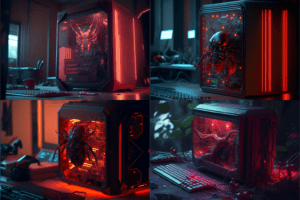Core Components of Blockchain Architecture

Blockchain technology has emerged as a game-changer with the potential to transform a multitude of industries, ranging from finance to supply chain management. To truly grasp the workings and transformative powers of this technology, it’s imperative to delve into the core components that constitute blockchain architecture. Here, we break down the essential building blocks of blockchain technology.
Distributed Ledger. At the core of blockchain architecture lies the distributed ledger. It serves as a continuous chain of blocks, with each block containing a list of transactions. What sets it apart is its decentralized nature, where data is stored across a network of computers or nodes. Each of these nodes maintains a full copy of the ledger, ensuring transparency, security, and reliability. This distribution eliminates the risks associated with a single point of control or failure.
Blocks. Think of blocks as the containers that house a group of verified transactions. These transactions could encompass various activities, including the transfer of digital assets, data recording, or the execution of smart contracts. When a block reaches its capacity, it is sealed and linked to the previous block, forming an unbroken chain. This linking mechanism guarantees the chronological order and integrity of data, creating a tamper-proof record.
Cryptography. This component plays a pivotal role in ensuring the security of blockchain architecture. It relies on cryptographic algorithms to encrypt and verify transactions. These algorithms protect the confidentiality and integrity of data, making it challenging for unauthorized parties to manipulate or gain access to the information.
Consensus Mechanism. The consensus mechanism is the set of rules that ensures that all participants within the blockchain network unanimously agree on the validity of transactions and their order in the blockchain. Well-known consensus mechanisms include Proof of Work (PoW), Proof of Stake (PoS), and Delegated Proof of Stake (DPoS). These mechanisms serve as the backbone of blockchain security, preventing issues like double-spending and maintaining the trustworthiness of the network.
Smart Contracts. Smart contracts represent self-executing agreements with terms and conditions directly encoded into the blockchain. When specific conditions are met, these contracts automatically execute, without the need for intermediaries. This trustless and automated process streamlines interactions and transactions within the blockchain.
Nodes. Within the blockchain network, individual computers, referred to as nodes, perform various functions. Full nodes store the entire blockchain and validate transactions. Mining nodes participate in the consensus process and create new blocks. On the other hand, light nodes store a partial blockchain and rely on full nodes for verification.
Digital Signatures. Vital component for verifying the authenticity of transactions within the blockchain. When a user initiates a transaction, they sign it using their private key. Other participants can then verify this signature using the sender’s public key, confirming the transaction’s legitimacy and source.
Peer-to-Peer (P2P) Network. Blockchain architecture relies on a peer-to-peer network, enabling direct communication between nodes. This decentralized network structure underpins the principles of decentralization, fault tolerance, and redundancy. P2P networks are essential for propagating transactions and blocks seamlessly throughout the blockchain.
Decentralization. Decentralization stands as a core principle within blockchain architecture. It signifies the absence of a central governing authority or intermediary within the network. Decision-making and transaction validation are instead distributed across network nodes, resulting in a system that is resistant to censorship and resilient against single points of failure.
Immutable Record. Once a block is added to the blockchain, its contents are considered immutable, meaning they cannot be altered or deleted. This feature is instrumental in ensuring the integrity and trustworthiness of the data stored on the blockchain.
Comprehending these fundamental components of blockchain architecture is imperative for anyone seeking to harness the vast potential and advantages offered by this technology. With its decentralized, secure, and transparent nature, blockchain has the power to disrupt and improve an array of industries, including finance, healthcare, and well beyond.










